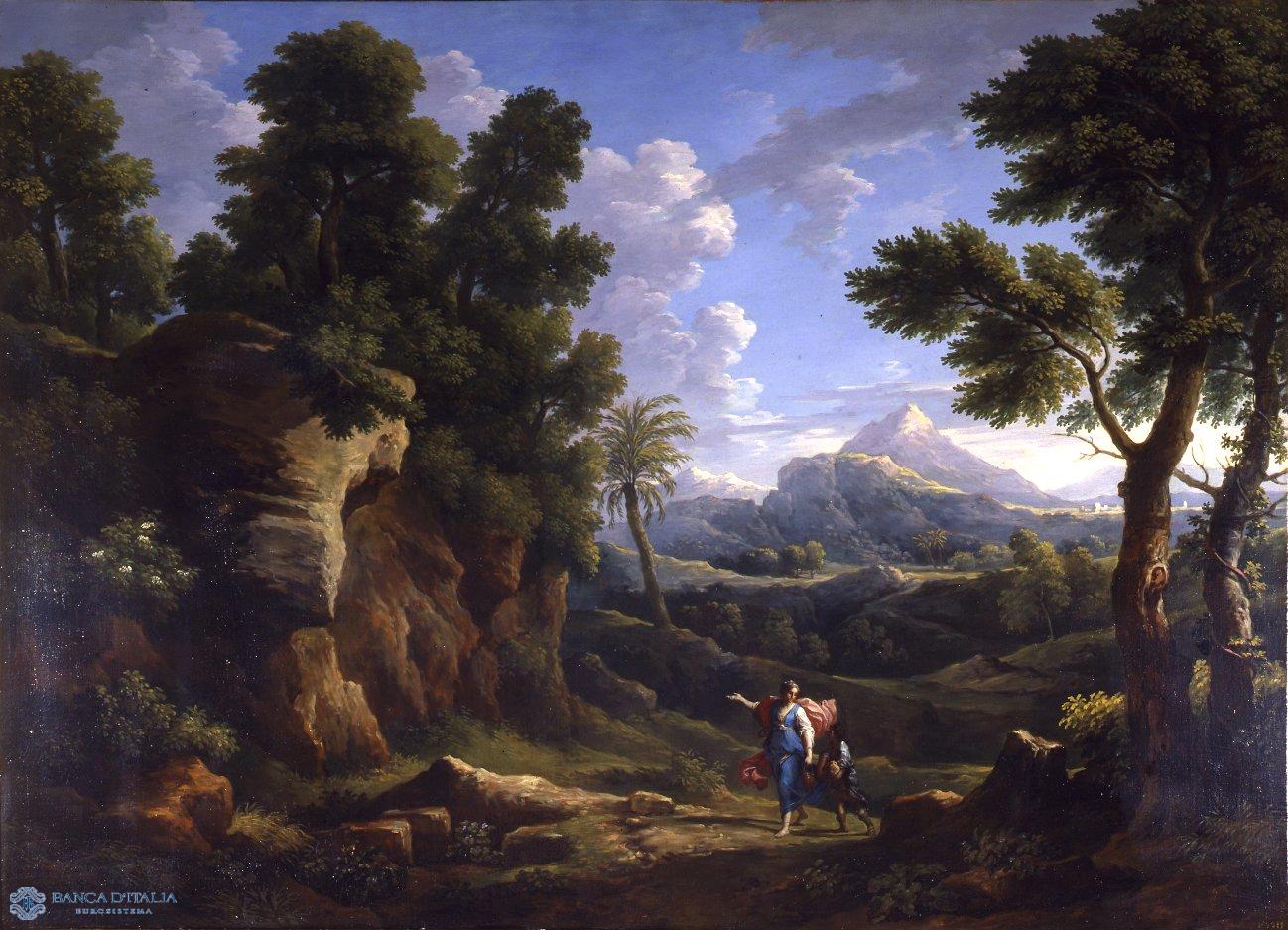The subject of the painting is the story of Hagar and Ishmael told in Chapter 21 of the Book of Genesis. Abraham’s slave-woman and her son are given bread and a flagon of water and sent out into the desert of Beersheba. The two figures, in fact, carry a loaf of bread and a terracotta vessel.
The painting is one of the largest works by van Bloemen; it is a second version of the theme, which also appears in a painting now in a private collection. The two works are identical in composition and in all minor details; the only difference lies in the range of colours: the first canvas, dated around 1735, is in the warmer tones of daytime, while the Bank of Italy’s version, probably of a slightly later date, uses intense blues and greens, with mother-of-pearl effects in the sky. The figures were probably painted by the Roman artist Placido Costanzi, who contributed in this way to his Flemish colleague’s landscapes. The rocks and trees on the left, like the larger trees on the right, appear to have been observed from nature in the Roman campagna. Avoiding the desert setting of the biblical story, the scene takes place in a verdant valley, which becomes a pretext for depicting a luxuriant natural landscape.
Jan Frans Van Bloemen, detto l’Orizzonte, Paesaggio con Agar e Ismaele
Landscape with Hagar and Ishmael
18th century AD
Painting
Biblical - Historical - Mythologic

Artist
Date
1740 ca.
Material and technique
Oil on canvas
Measurements
128 x 221 cm
Compiler
Alessandro Zuccari
